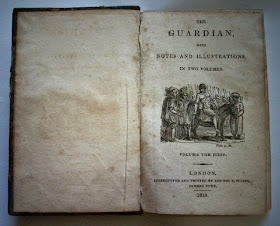First off, a big Teaching Authors welcome to our latest TA, Carla McClafferty. Not only did Carla and I meet and bond some fifteen years ago at an SCBWI retreat in Arkansas, we once shared an editor. Greetings, old friend, and welcome aboard. For the next couple of posts we are going to be talking about your genre, non-fiction, and what it shares with fiction.
I have always wanted to be a Carla-sort of writer, a non-fiction writer. "Write what you love" is one of those things writing teachers (like me) tell their students. I love non-fiction. My "adult" reading consists almost entirely of biographies and history. If I read two adult novels a year, that's a big deal for me.
So why don't I write non-fiction for children? The reasons are endless, so I'll boil it down to one. I just can't stick to the facts.
Both of my novels,
Yankee Girl and
Jimmy's Stars began life as memoirs.
YG was about my life,
JS about my mother's family. Because they both took place in other times and places...Mississippi 1964 and Pittsburgh 1943...I did a boatload of research to make sure I had the details right. For the World War II world of
Jimmy's Stars, I made a timeline of what battles occurred where and when between September 1943 and September 1944, and when news of those battles reached the States. I compiled a radio schedule for the Pittsburgh stations. I studied streetcar routes. I poured over the various rationing schedules for gasoline, food, clothing.
You would think that
Yankee Girl would not require quite so much research, since after all, this was based on my own elementary school years. I even had my 5th and 6th grade diaries. Still....do you remember what week the Beatles' "I Feel Fine" reached number one on the charts? Neither did I. Since the main character is a huge Beatles fan, there is at least one reference to a Beatles' song in every chapter. In addition, this the height of the Civil Rights Movement (the Selma March to Montgomery occurs about three quarters of the way through
YG). I had to know exactly what date this protest or that bombing occurred. I remembered that these things had happened but that wasn't enough. I had to know exactly when. I spent a dismal five months in the microfilm room of the Jackson Mississippi library, going through a year's worth of newspapers, reliving a sad and scary time.
By now you are thinking, "Well, with all this research, why didn't she just go ahead an write those memoirs?" Good question. All I can say is that my mind refuses to march in a straight line . Yes the facts are there, because they are part of the story. But once I start writing, my "real" character refuses to stick to their own "real" story. I start thinking "but wouldn't it be more interesting if this happened instead? Or if her best friend was this kind of person?" Before I know it, I am off on a completely different story than I had first intended. The only thing that remains the same is the structure of historical fact and detail that makes the story "real" for me (and hopefully for the reader as well.)
I am just beginning to write contemporary fiction for young people and guess what? There is no less research involved. Next month I will have a story in a YA anthology called
Things I'll Never Say.
I live in Georgia. My main characters live in Georgia. I have lived here for fourteen years. Yet, for a 3,000 word story here are just a few story points I needed to find out to make the story real: price of admission to the Atlanta Botanical Gardens, driving times between different towns, the academic school year of Emory University, the most popular spring break towns with Georgia teens...well, you get the point.
My point? Getting the details right is one of the ingredients for making a story real. Editors care about details. I spent weeks nattering back and forth with my
Yankee Girl editor over the dates of those Beatles songs. Readers care. I had an adult write me that if the mother in
Yankee Girl used a steam iron, then she didn't also need to sprinkle her clothes before ironing. I was a little miffed that someone could read a 225 page book and this is what she chose to write me. It never occurred to me look up that sprinkling/steam iron detail. That's the way my mom always ironed. (I still probably need to look that up.)
I once read a Big Time Award Winning Book that took place in a state where I had lived and knew very well. This author had placed four major cities within an hours drive of each other. In reality, they were in different corners of the state and hours away from each other. Whatever affection I had for the book died right then. Good grief, anybody could look at an atlas (this was pre-Internet) and see where those cities were. I later read an interview by the author and discovered that she had never visited that state (or apparently done any research) but she "knew" somebody who "used" to live there. That was one of those moments when you want to scream and throw the book across the room.
That was the moment when I decided that for me, getting the details "right." Facts are front and center of a non-fiction, but they are no less important in fiction.
Now about that steam iron....
Posted by Mary Ann Rodman














.JPG)
























